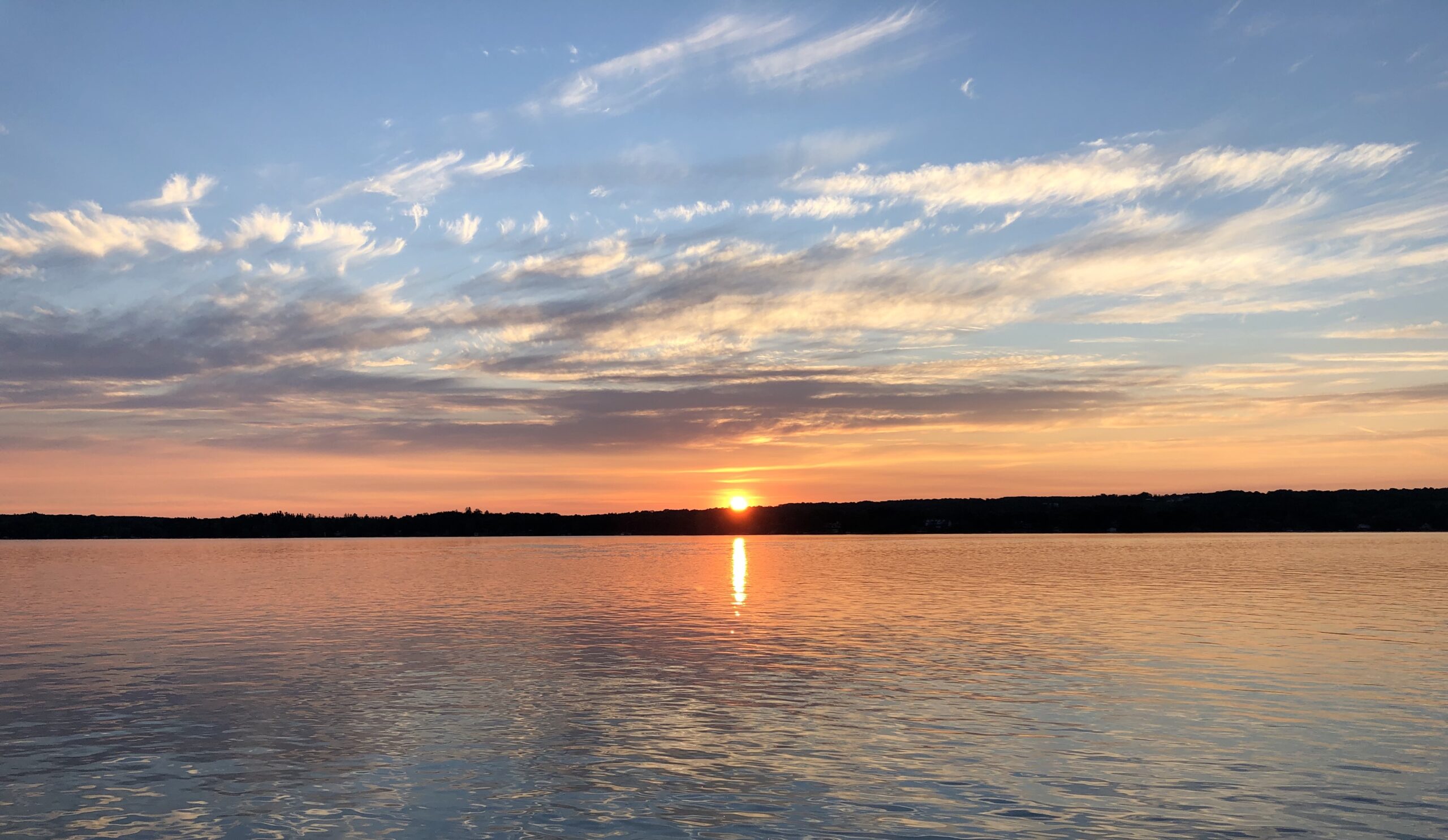
It’s August in Central New York and the daytime air temps are lingering in the mid 80’s and low 90’s. The dog days of summer are here! Summer Fly Fishing is in full swing.
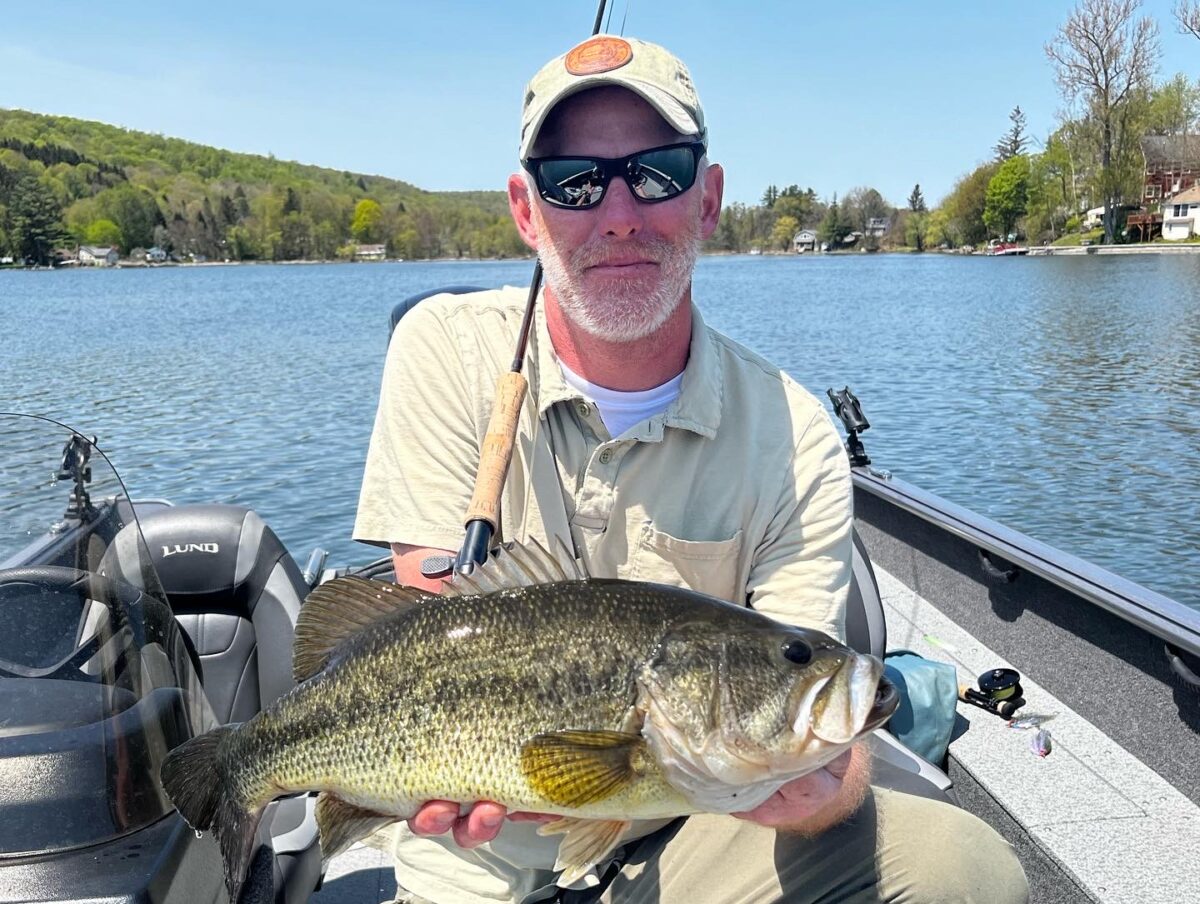
In the northeast, when we start talking about summer fly fishing, we are not talking about trout. The stream flows are low and the water temps are high. In the best interest of the trout, fly fishers leave the trout alone.
Summer fly fishing in Upstate New York begins around mid-July. And while it may be a second-best choice to fly fishing for trout, it is still fly fishing. Done right it is big fun and a great way to enjoy summer mornings on the water.
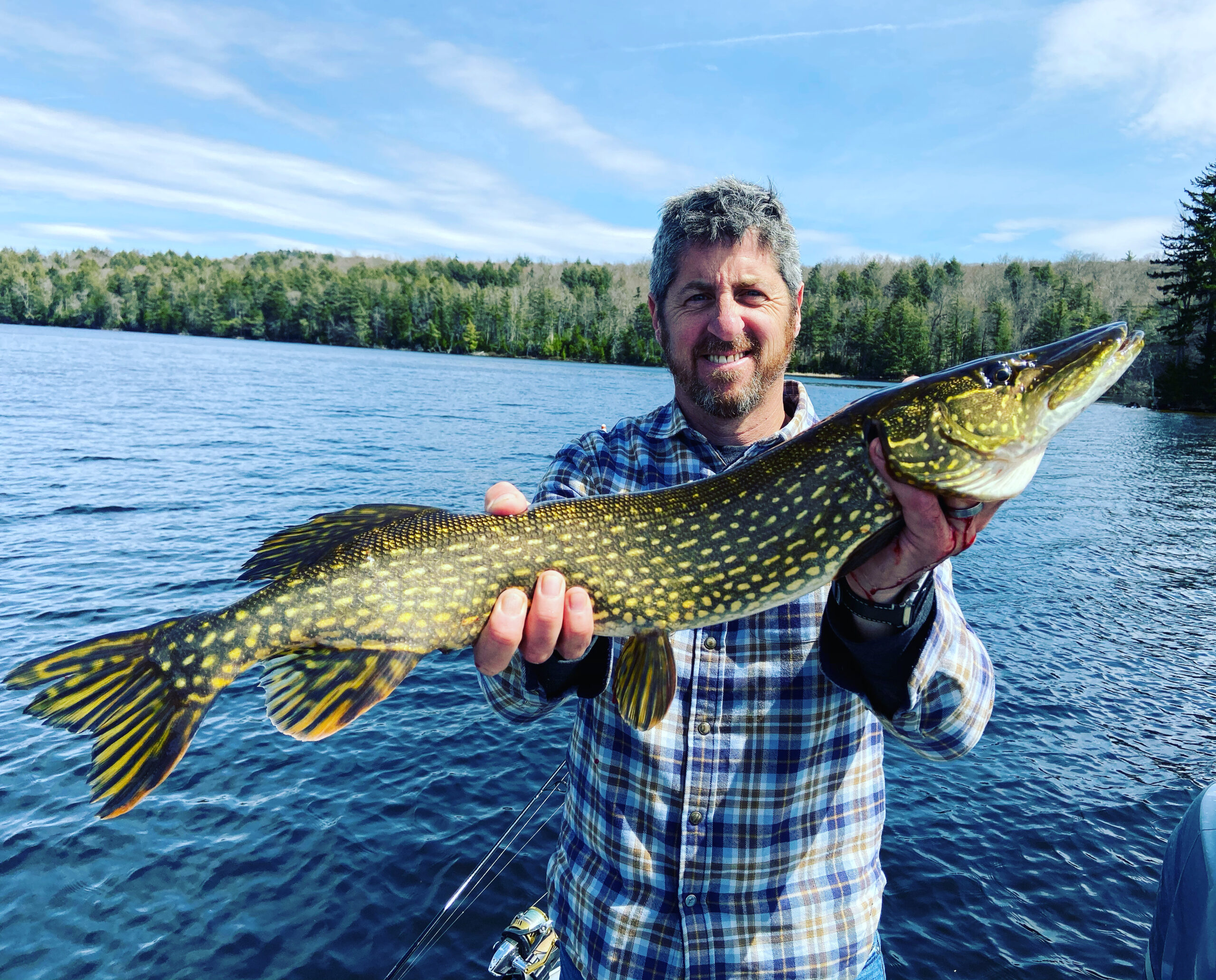
With so many lakes and rivers in Upstate New York to choose from…There is never a lack of targets for the fly fisher anytime of the year. The warm water species I pursue in summer are smallmouth bass, largemouth bass, carp, freshwater drum, tiger muskie, and northern pike.
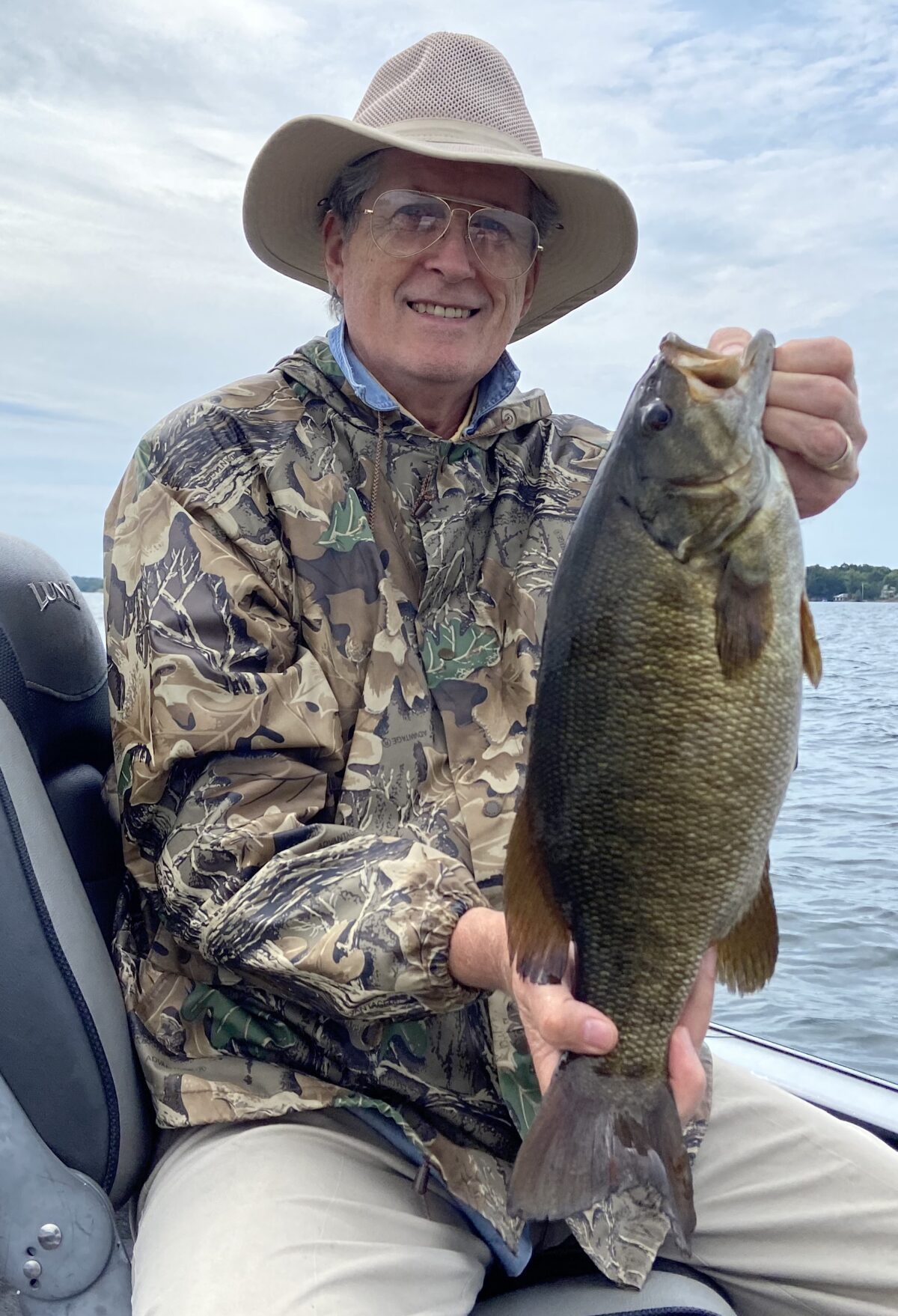
Mid-to-late summertime finds my eight, nine, and 10 weight rods traveling in the boat. They are rods I love to cast and for summer fly fishing on big water they work great! For carp, pike, and sheepshead (fresh water drum), stout rods are required. Light enough so that it won’t wear you out, but strong enough to tire out the fish.
As in any form of fly fishing, there are techniques, fine-tuned, for each species. Warm water fish can be tough to catch. For a variety of reasons it can be very challenging to get these fish to put a fly in their mouth. There are some recipes that connect consistently however.
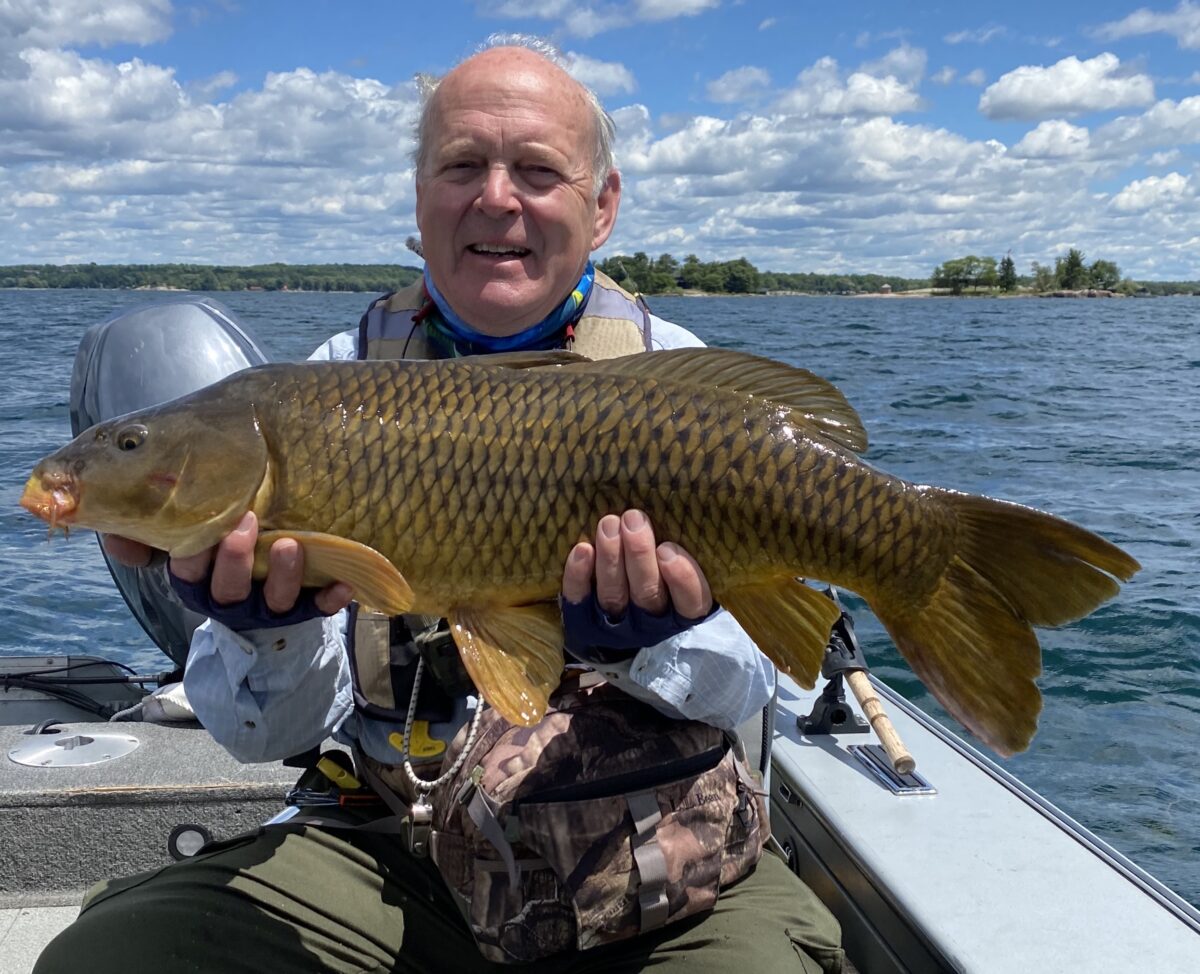
The Common Carp
Twenty five years ago stories of fly fishing for carp started to make their way into mainstream fly fishing magazines. This fascinated me. Carp are so common in local waters and I never had the notion to pursue them with a fly. Until I read the magazine articles.
A Phleuger nine weight graphite rod was all I had, so I rigged it up with a Cortland click-and-pawl reel, and then — no skimping — I had the owner of a fly shop spool the reel with a brand new Orvis nine weight, weight forward, floating line…A nice, slick, state-of-the-art fly line. Cost was $70 dollars in 2000.
Around the same time, some outdoor writer coined the phrase “freshwater bonefish” in regard to fly fishing for carp. The phrase fits. And then it doesn’t.
Over the years I have had several opportunities to go fly fishing for bonefish. When I think of fly fishing for bonefish I think of white sand beaches, tropical climates, topless sunbathers, conch fritters, magnificent ocean vistas, and Jamaican Lager. When I think of fly fishing for carp I think of shallow sloughs, canals, mosquitoes, mud flats, and Pabst Blue Ribbon.
Carp do behave like bonefish. They school and “tail” on shallow flats and shoals. They are skittish but will take a well-presented fly. And, of course, they are powerful fighters. Which leads me back to my story about the expensive Orvis fly line.
After assembling my nine weight outfit with a short, stout, leader and 10 pound tippet, I launched my brothers 12 foot aluminum boat from the beach of his north shore home on Oneida Lake. It was Memorial Day weekend. The year was 2000
My 12 year old nephew, Jacob, was on the tiller of the five horse outboard as we motored east, paralleling the shoreline. We found carp in short order, in about two to three feet of water, their big tails sloshed from side-to-side on the surface, as a trio of them rooted their rubbery snouts in the rocks and mud of the lake bottom.
With the low morning sun at our back, Jacob killed the motor at my request, and the boat glided toward the un-suspecting carp. Once in casting range, I clambered to the front of the boat, and delivered the package. The package was a bead-headed brown wooly bugger with rubber legs tied in the thorax. It plopped a few feet to the right of the feeding carp. The fly sank slowly to the bottom, and we watched wide-eyed, as one of the big carp slid over and ate it.
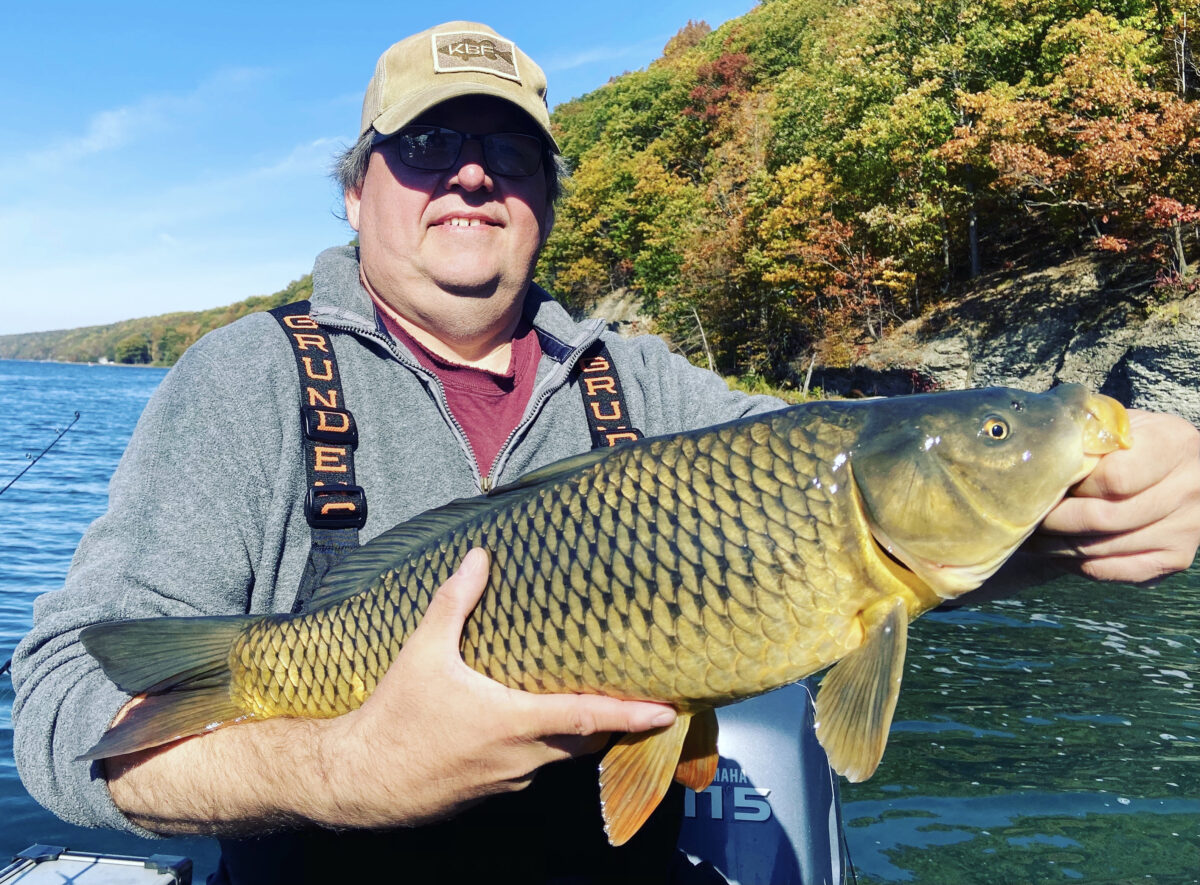
When I set the hook the carp wallowed for a moment, then made a terrific run, non-stop, of about a 150 yards. The click-and-pawl reel was screaming and within seconds I was well into my backing.
I shouted for Jacob to fire the outboard and chase after the carp. My brand new Orvis fly line disappearing quickly from sight! My backing beginning to run out!
The engine would not fire! Jacob pulled and pulled on the cord and then the cord broke. We were dead in the water. I put the brakes on the carp and “pop”…It was gone.
The knot attaching the backing to the fly line had come un-done. Pulled out. A pigtail of dacron braid was all that was left. My $70 dollar Orvis fly line gone. That was to be my first round with carp on a fly.
Minus the broken recoil cords and poor knots, the above scenario describes the way I chase after carp today. Over 20 years later. Get the sun at your back, early in the morning, and cruise the shallow margins of the lake looking for active carp. These days the fly casting is done from the deck of my 2021 Lund boat with a state-of-the-art electric prop mounted on the bow for silent and precise stalking.
On a lake the size of Oneida, the locations are endless. The entire lake is full of giant carp. Pursuing carp on Oneida Lake is best done from the deck of a substantial boat. As a 50,000 acre lake will do, Oneida has a habit of getting dangerous fast. With an average depth of 20 foot and strong west winds, she can go from placid and calm, into a raging beast in a very short time.
Use light and surface conditions as the factors that determine where you fish. I have never navigated the shallows of Oneida Lake, anywhere in the summer months, and not found active carp. Big ones. Tungsten beadhead woolly buggers with rubber legs tied brown, green, or black on a size 6 streamer hook have always proven effective. With brown perhaps the most effective color.
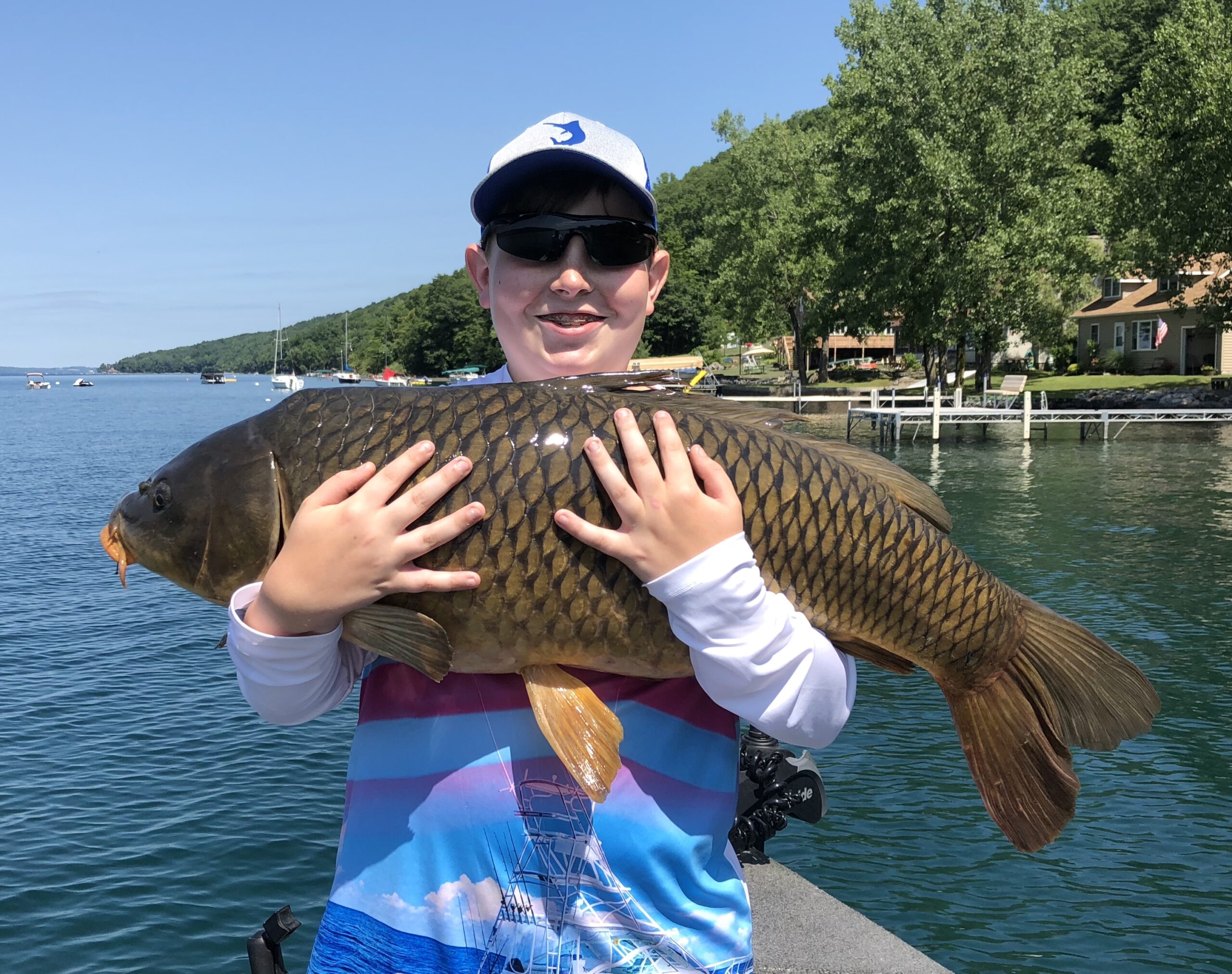
I have developed a love/hate relationship with carp. The result of twenty years trying to catch them on a fly. Thought to be the smartest fish in the lake by many anglers, the common carp has intense senses. It is in keen awareness of its surroundings at all times. It has one of the most highly developed lateral lines of any freshwater fish, making it very sensitive to disturbances or activity in the water and out. Sneaking up within casting range of a school of carp is a high art.
Many who pursue carp with a fly in shallow water often fail. A careful stalk and delicate cast to a feeding carp is too often met with an explosion of silt and mud, with the big, brown, fish bolting away. Such occurrences, in succession, can make one swear and spit. You may begin to develop a slight disdain for the carp. The challenge of catching one never wanes, however, and the carp saga continues.
Northern Pike And Muskellunge
Streamers. Streamers. And more streamers. The ones I like are the Dorado-style nylon flies they use in the Amazon. They are indestructible, light, they do not absorb water, are easy to tie, and they catch fish. They can be dressed heavy or light in an infinite variety of colors and shapes. It is their cast-ability and durability that make them so appealing to the fly fisher.
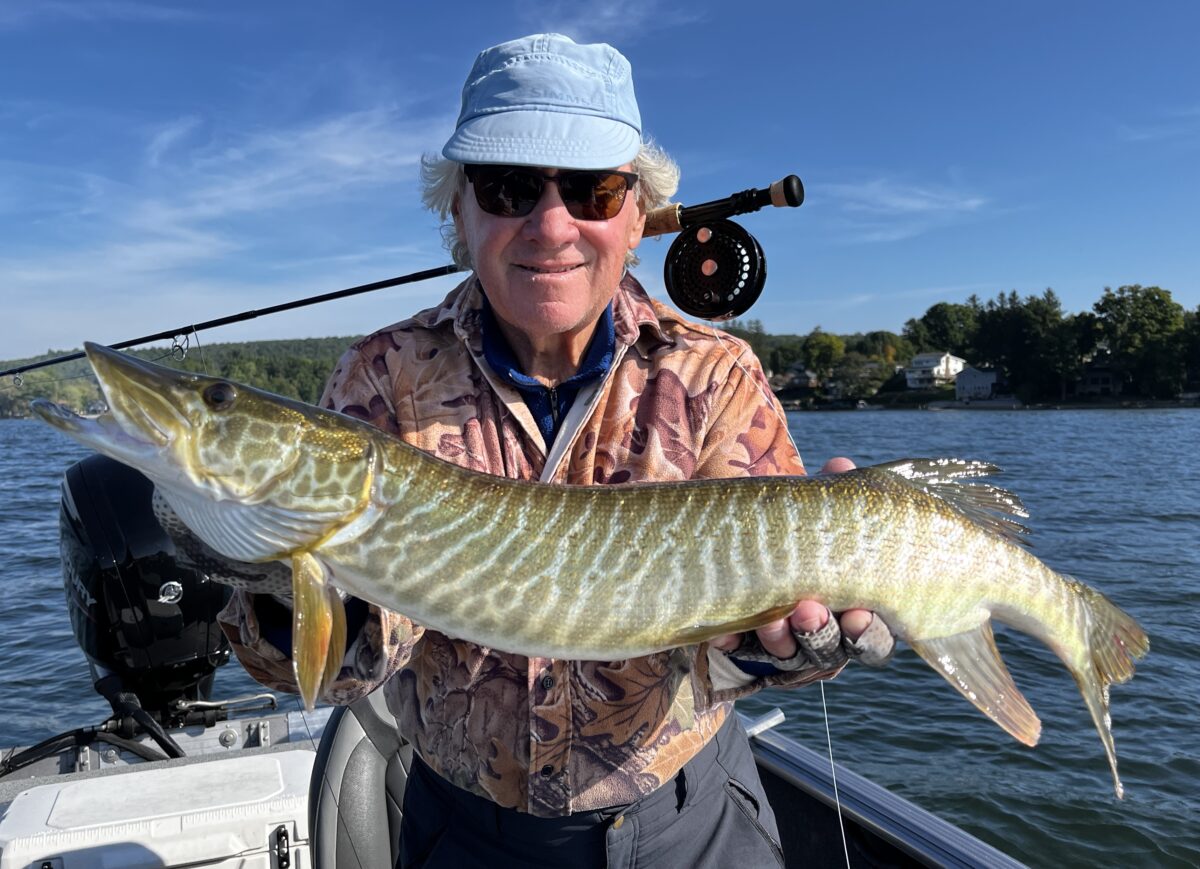
These simple flies are attached to a four or five foot section of 30 pound fluorocarbon with an improved cinch knot with a long tag end. No loop knot. Intermediate line is necessary, but I always have a rod rigged with a rocket taper weight forward floater. Sink tips are a waste of time as they are no fun to cast and create a terrible “hinging” effect to the presentation.
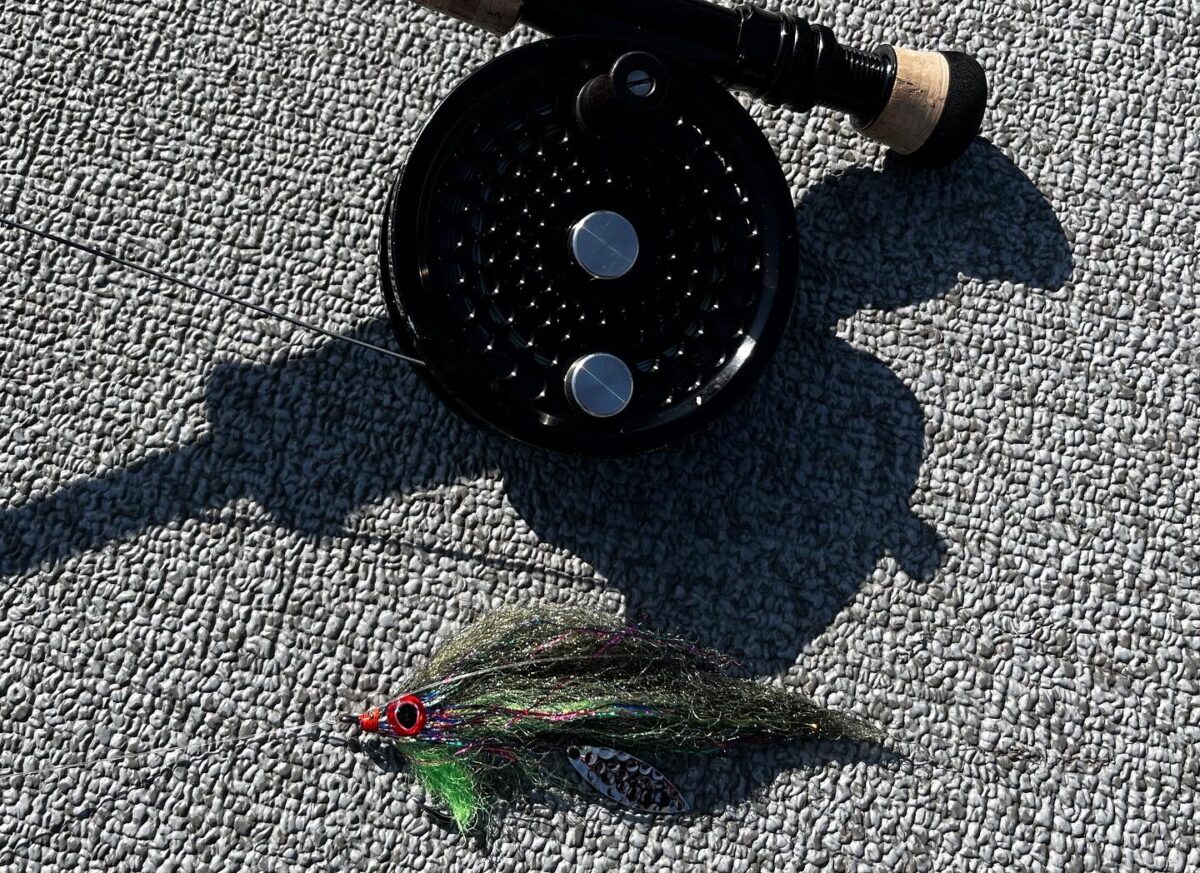
The intermediate line I use is the Cortland Camo. It has a nice slick finish, is low-profile in color, casts well, and can be found for less than $60 dollars. Intermediate lines provide a more horizontal presentation lower in the water column which seems to work best.
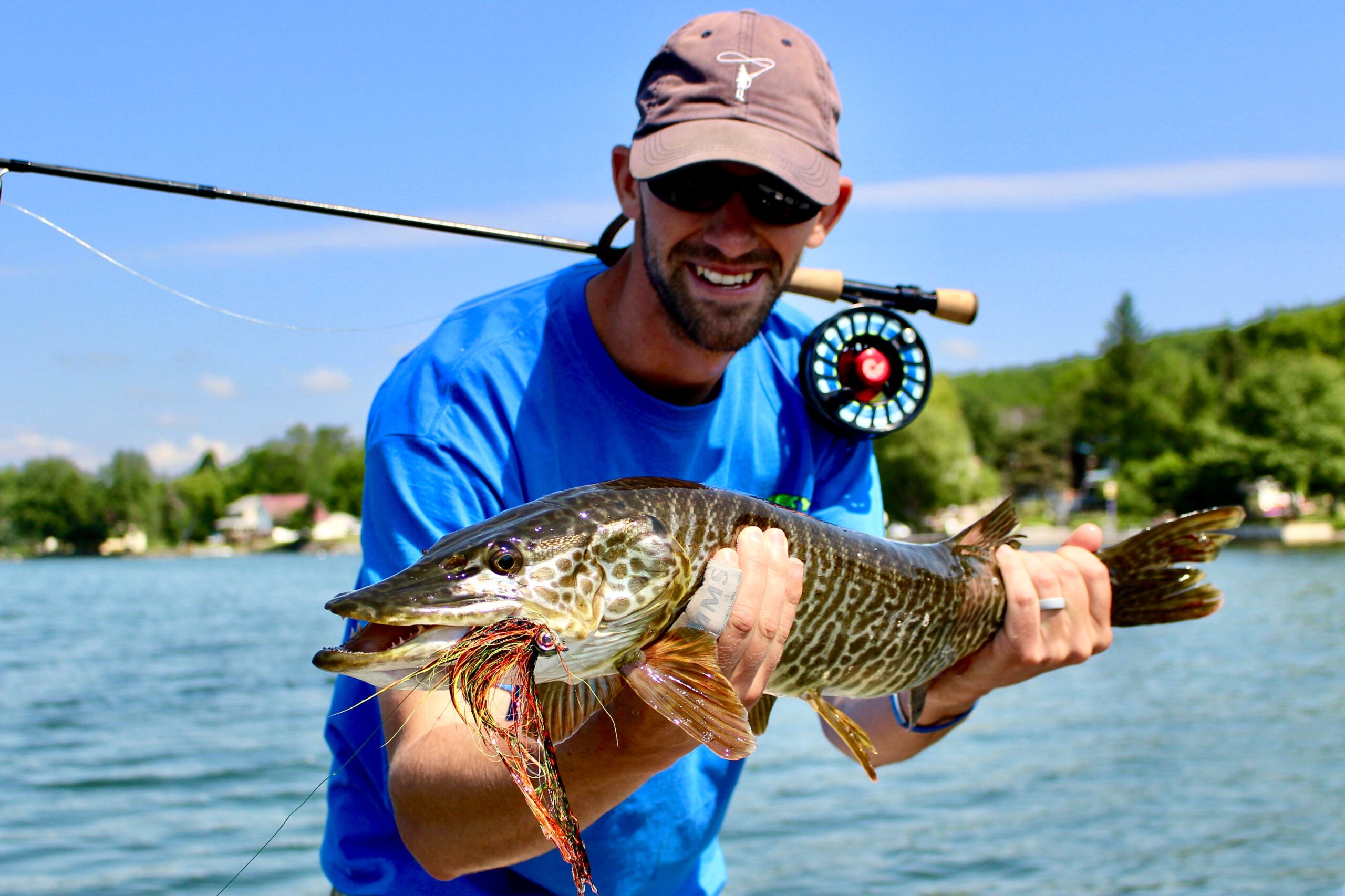
When summer fly fishing for pike or muskie, concentrate on weed edges, in and around any healthy, weed beds you can find. Pike love the weeds and spend most of their time deep within the forest of weeds during the summer. They hide adjacent to pronounced edges, holes, or channels in the weeds and ambush their prey.
Cast the fly into these locations and use a fast-retrieve with long pulls on the fly line. Race the fly parallel to weed edges, through holes and channels, and alongside the boat. Don’t let them look at it very long and be prepared for crushing takes! If you are picking up weeds on your line incessant, you are doing something wrong and need to change your fly, leader, or knots.
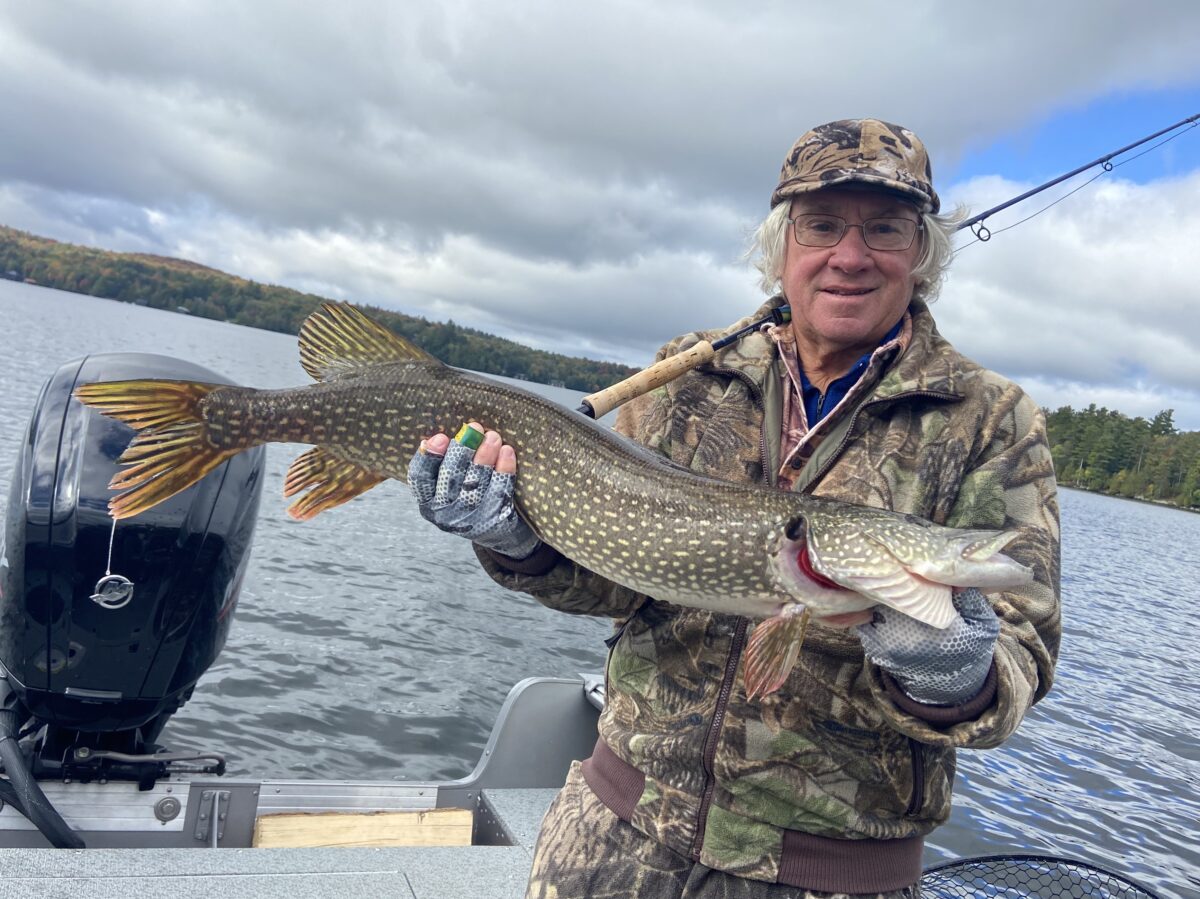
Different colors are attractive to esox species at different times. Different times of the year. Different times of the day. Size of the fly is also important. In the summer there is a wide variety of different sized baitfish in the lakes. The fry from the previous Spring spawn is an important food for all the piscivorous fish, even big pike. The flies I cast are no longer than four or five inches in length. I will often go smaller, but rarely larger.
Rainy, overcast, shitty days, offer the best pike and muskie fishing on pressured lakes and rivers. In fact; the shittier the better. Pike enjoy low-light, cloudy days, with rain and will feed when these conditions occur. On lakes and rivers that see great fishing pressure, flies can be very effective on rainy days.
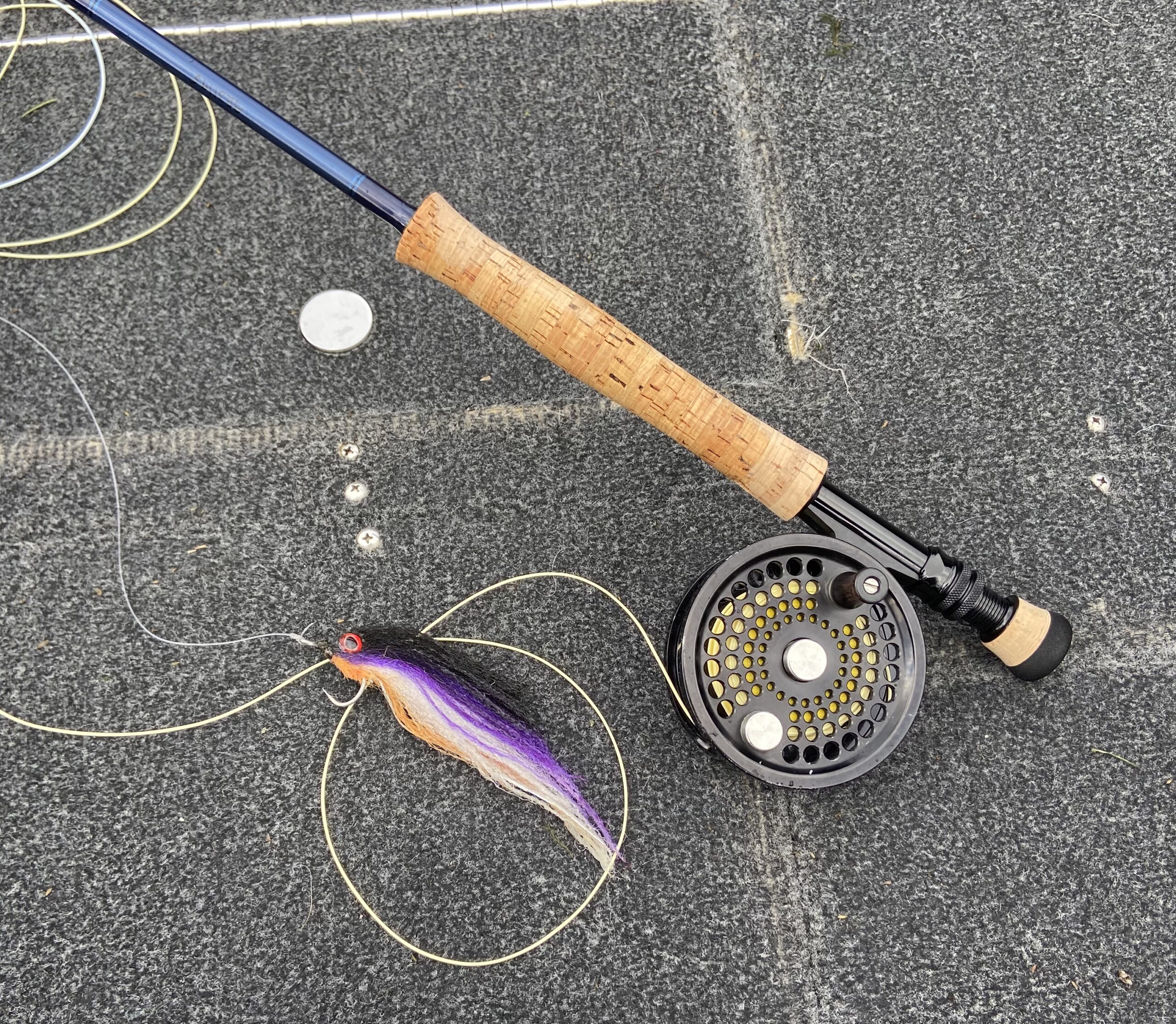
Freshwater Drum (Sheepshead)
In the world of fly fishing, freshwater drum could be considered exotic? In the St. Lawrence River, Oneida Lake, and the Barge Canal System, they are quite common. They grow to a large size, travel in small schools, and will take a fly. They may not be handsome, but they fight as well as any fish I have ever hooked.
The sheepshead is a shoal-dweller. It forages crustaceans, crayfish, mussels, and also feeds on minnows and insects. It’s preferred habitat is mid-river shoals with current and deep water nearby.
Employing the bow-mounted electric prop, I enjoy stalking big shoals in the summer for sheepshead. Starting at the downstream or leeward end, I work the boat along the edges, upstream or forward, in tight — so I can see the top of the shoal. Calm, clear, bright, and windless mornings, with the sun at your back, are the ideal conditions.
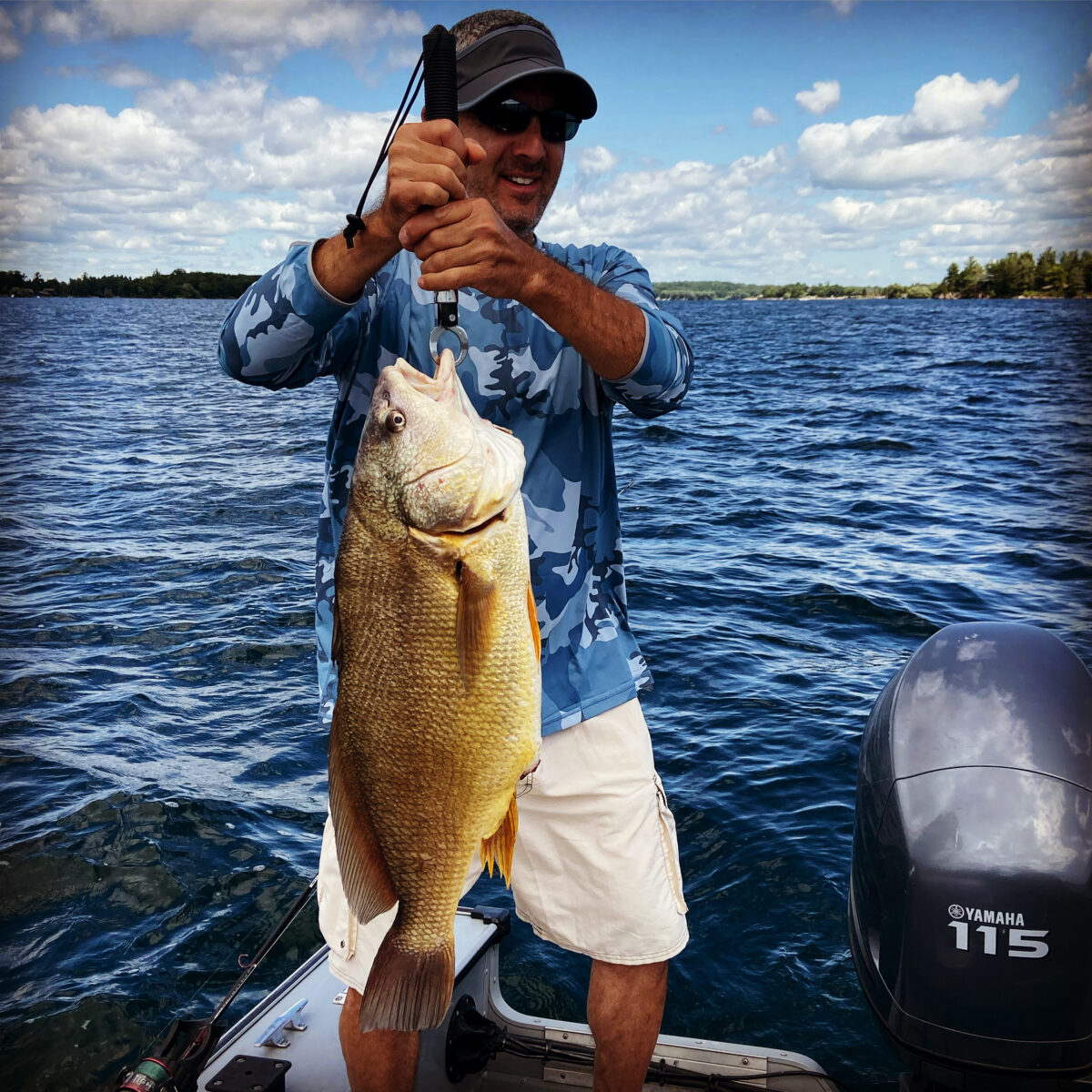
The weather is the most significant factor in successful fly fishing for drum. To sight fish for these fish you require a bluebird day. With the late morning sun at your back, search the shoals with the electric prop. Starting on the downstream end of the shoal, you work the boat forward, and around the edges. You should be close enough so that you can see the shallow top of the shoal.
If sheephead are present, you will see them. Again, tungsten wooly buggers in green, brown, or black, dressed with rubber legs, will do the trick. Sheephead will feed head down, in trios or pairs, rooting along the shoal. A well-placed fly out in front of them often works. Sheephead are a strong, powerful, fish!
With thousands and thousands of acres of high quality public fishing water in Central New York, the avid fly fisher can find great fishing for warmwater species. Wether you wade and stalk, use a canoe, a paddle board, or a fully-decked 18 foot Lund with a Minn Kota Terrova — there are plenty of targets out on the big water of Central New York in the summer!
